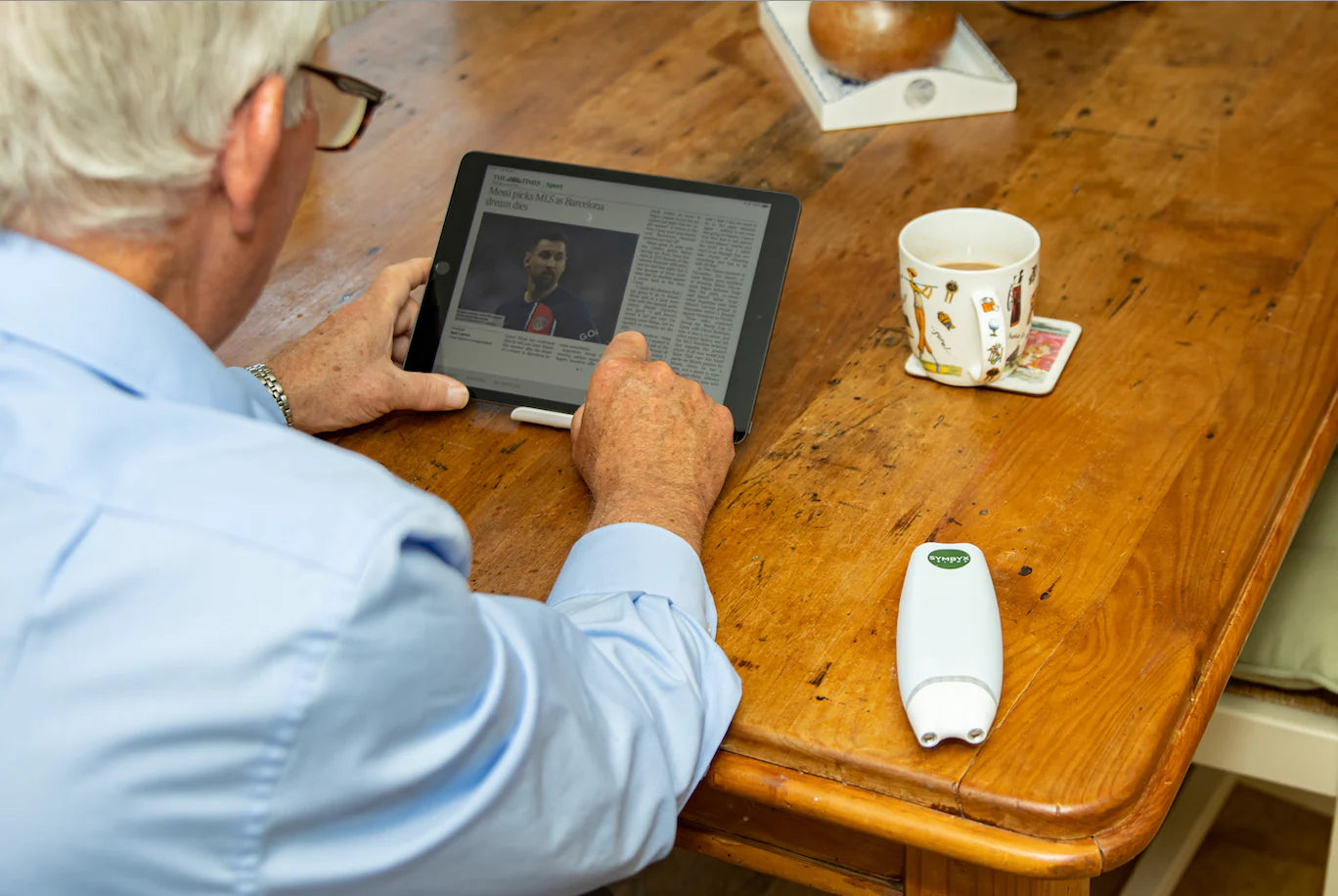Photobiomodulation (PBM) has gained mainstream acceptance as a promising therapeutic approach for various medical conditions, including Parkinson's disease, Fibromyalgia, Chronic Pain and Bowel Disease. But what exactly is photobiomodulation, or light therapy, and how does it work? Let's explore these questions and dive into how SYMBYX harnesses this technology for Parkinson's treatment.
What is Photobiomodulation Used For?
Photobiomodulation which is sometimes referred to as low level laser therapy or light therapy, is employed to stimulate cellular activity using light at specific wavelengths. Its applications are broad, ranging from cosmetic, pain management, wound healing and even cognitive enhancements, such as improving mental acuity or reducing brain fog.
Does Photobiomodulation Really Work?
Yes, there are over 8000 peer reviewed research studies on light therapy for a multitude of uses, including those led by Neurologists like Dr. Geoffrey Herkes,who have demonstrated the efficacy of PBM specifically in Parkinson's treatment, using the SYMBYX Neuro helmet. In addition, the PDCare laser by SYMBYX has been cleared in Europe and Australia for the reduction of Parkinson’s symptoms and clinically trialled in a study published in 2021 in BMC neurology journal.
What Are the Side Effects of Photobiomodulation?
Photobiomodulation is safe to apply, with no adverse interaction with medications or side effects. Some individuals may experience temporary warmth or discomfort, when using the SYMBYX Neuro helmet, but this is typically mild as the helmet has been designed to maximise airflow during treatment. SYMBYX's other laser devices are non-thermal, that is they are cool to apply by the user in the comfort of their own home. The majority of users of our handheld lasers, in fact, do not even feel the treatment when it is being self-applied.
What is an Example of Photobiomodulation?
One notable example of photobiomodulation or light therapy is its use in Parkinson's treatment. The PDCare laser is an infrared laser device that is applied to the gut or abdomen of the Parkinson's patient for 18 minutes and the back of the neck or vagus nerve for 2 minutes. This 20 minute treatment is applied at home 3 times a week by the user and has been clinically trialled with the positive results of the study peer reviewed and published in the BMC Neurology Journal, July 2021 edition. Users of this photobiomodulation device have cited improvements in sleep, digestion, constipation, energy, sense of smell, mood, tremor and/or walking gait, after 8-12 weeks of consistent application
What is the Success Rate of Photobiomodulation?
The success rate of PBM varies depending on the condition being treated and the specific device used. In Parkinson's therapy, products like the SYMBYX Neuro and PDCare Laser have demonstrated significant improvements in symptoms, but individual results may vary. Please read our customer reviews for more information. Or contact our Clinical Support team for further information about your condition and the specific protocol to apply.
Is Photobiomodulation the Same as Red Light Therapy?
Photobiomodulation is a more general term which encompasses red light therapy, as well as other light wavelengths like infrared. Red light therapy, therefore, is a subset of photobiomodulation or light therapy, focusing on specific red wavelengths known for their healing and stimulating effects. Our SYMBYX DermaCare laser emits red light therapy of 635 nanometers and is CE/ARTG listed for reducing inflammation and chronic pain, and especially recommended for peripheral neuropathy, and arthritis or pain in the hands and feet.
And how long before I feel the results of light therapy or photobiomodulation?
Photobiomodulation represents an exciting frontier in medical therapy, offering non-invasive treatments for a wide array of conditions, including Parkinson’s Chronic Pain, Fibromyalgia and bowel disease such as IBD or Crohn’s. The work done by SYMBYX in Parkinson's treatment showcases the potential of this safe technology to make a meaningful impact on patients' lives today.
The length of time before positive changes occur will depend based on the specific SYMBYX device being used and the condition being treated. A minority of Parkinson's users will see immediate results, but for the majority of users it takes 8-12 weeks of consistent application of photobiomodulation before changes are apparent. In treating chronic pain or fibromyalgia, there should be come immediate pain relief, however again it will depend upon your specific circumstances.
Please note: As with any medical intervention, it is essential to consult with your primary healthcare provider for personalised information and treatment options.

